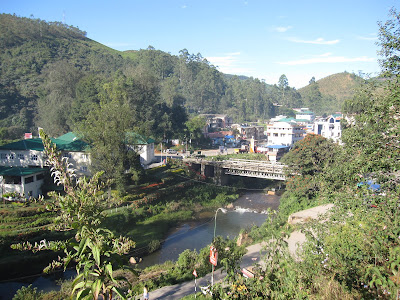We checked out of the luxurious Ramada Resort early Saturday morning for the first leg of the tour of Kerala - destination - the tea country of Munnar on the western slopes of the Western Ghats mountains of India. This distance was just about 120 km. But getting out of Cochin easily took one hour if not more. The streets were narrow and the traffic was heavy with buses, lorries and 3-wheel bajajs fighting for space to move on. And to top it all the noise from the constant 'honking' took a while to get used to! And Kerala ( pakdokter wondered if the rest of India would be the same) still has a long way to go to keep it's city clean...
The drive up to the Western Ghats was also slow - not due to heavy traffic - but due to the steep ascent along a narrow and winding road. Some stretches were like the drive up from Tapah to Cameron Highlands and some stretches were not unlike the narrower road from Gap up to our own Fraser's Hills! However this slow 3 to 4 hours drive up was made up for the emerging fantastic sceneries of undulating tea plantations as we drew closer to Munnar city, located at 6000 feet above sea level. The temperature was a pleasant 20 degrees celsius which came down to low teens in the evening and night.
We checked-in at the Tea County Hotel, an oufit managed by the KTDC ( Kerala Tourist Development Corporation).. It is a pretty resort on a strategic location overlooking the city. It is probably the best, if not among the best, that Munnar has to offer in terms of accomodation. The chalets are comfortable and the buffet dinner and breakfast offerred a sumptous selection of Kerala cuisines. The resort also has an 'ayurvedic spa' where various forms of therapies are on offer.
We spent the afternoon visiting the 'Tea Museum', first watching a well-documented feature describing the history of Munnar and the beginnings of the tea industry in the region. Thanks to the adventurous British soldiers from Madras who trekked up the Ghats and started the tea industry in the region which provided thousands of employment for the local folks as well as workers from the neighbouring Tamil Nadu. Currently most of the plantations are owned by giant Indian companies like the Tata with part ownership by co-operatives set up by the workers.











No comments:
Post a Comment